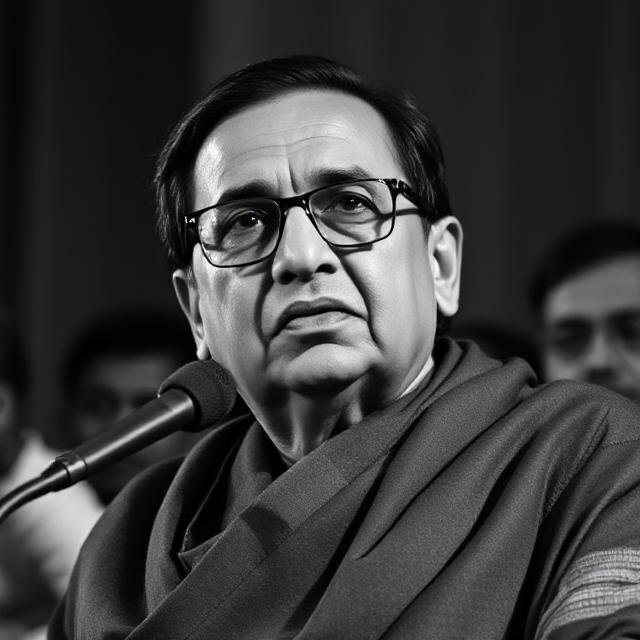Dr. B.R. Ambedkar’s Revolutionary Women’s Rights Legacy: The Architect of Gender Equality in Modern India
Dr. Bhimrao Ramji Ambedkar’s contributions to India’s social fabric extend far beyond his role as the principal architect of the Indian Constitution. As India’s first Law Minister, Ambedkar women’s rights advocacy represented one of his most progressive and transformative legacies. His visionary approach to gender equality through landmark legislation like the Hindu Code Bill fundamentally reshaped the legal landscape for Indian women, establishing principles that continue to influence women’s rights discourse today.
The Revolutionary Context of Ambedkar’s Women’s Rights Vision
When Dr. Ambedkar assumed the role of Law Minister in independent India, the country inherited a complex web of personal laws that severely disadvantaged women across all communities. The Hindu Code Bill women equality initiative emerged from Ambedkar’s deep understanding that true social justice could never be achieved without addressing gender-based discrimination. His approach was revolutionary for its time, recognizing that women’s rights pioneer India required someone willing to challenge centuries-old traditions and religious orthodoxy.
The social context of 1940s India presented immense challenges for women’s empowerment. Traditional Hindu law, as interpreted and practiced, denied women basic rights to property ownership, equal inheritance, and divorce. Women were essentially treated as dependents throughout their lives – first of their fathers, then husbands, and finally sons. Ambedkar recognized that this system perpetuated not just gender inequality but also broader social injustice that affected the most marginalized communities disproportionately.
The Hindu Code Bill: A Watershed Moment for Women’s Rights
The Hindu Code Bill property rights women provisions represented Ambedkar’s most comprehensive attempt at gender equality legislation. Introduced in 1948, this revolutionary piece of legislation sought to codify and reform Hindu personal law, granting women unprecedented rights and freedoms. The bill’s scope was ambitious, covering marriage, divorce, inheritance, adoption, and guardianship – essentially every aspect of a woman’s legal existence within the family structure.
Property Rights Revolution
Under Ambedkar’s Hindu Code Bill, women gained the right to inherit property equally with men, a radical departure from traditional Hindu law that severely limited female inheritance. The legislation established that daughters would have equal rights to ancestral property, challenging the age-old practice of patrilineal inheritance. This provision was particularly significant for Dalit women empowerment, as it provided economic security and independence that had been systematically denied.
The property rights provisions extended beyond mere inheritance. Women gained the right to own, manage, and dispose of property independently, without requiring male guardianship or approval. This economic empowerment was foundational to Ambedkar’s vision of women’s liberation, recognizing that financial independence was crucial for achieving true equality.
Marriage and Divorce Rights Reform
The marriage laws reform introduced through the Hindu Code Bill represented another groundbreaking aspect of Ambedkar’s women’s rights advocacy. The legislation established monogamy as the standard for Hindu marriages, prohibited child marriage, and recognized women’s right to divorce – provisions that were revolutionary in conservative Indian society.
Divorce rights women under the new legislation included grounds such as cruelty, desertion, conversion to another religion, mental disorder, and incurable disease. This marked a significant departure from traditional Hindu law, which made divorce nearly impossible for women while allowing men considerable freedom in dissolving marriages. The bill also addressed issues of maintenance and custody, ensuring that divorced women would not face destitution.
Adoption Laws and Child Welfare
The adoption laws equality provisions in the Hindu Code Bill demonstrated Ambedkar’s comprehensive approach to family law reform. The legislation granted women equal rights to adopt children and established clear guidelines for adoption procedures. This was particularly important for widows, who previously had limited legal standing in adoption matters.
The adoption provisions also addressed the welfare of adopted children, ensuring their inheritance rights and legal status within adoptive families. This holistic approach reflected Ambedkar’s understanding that women’s rights were intrinsically linked to child welfare and family stability.
Beyond Legal Reform: Ambedkar’s Comprehensive Women’s Rights Agenda
While the Hindu Code Bill represented the cornerstone of Ambedkar gender equality legislation, his commitment to women’s rights extended across multiple domains of public policy and social reform.
Political Representation and Voting Rights
Ambedkar’s advocacy for women political participation was evident in his constitutional drafting work. He ensured that the Constitution guaranteed universal adult suffrage, making India one of the first countries to grant voting rights to all women regardless of education, property ownership, or social status. This was particularly significant given that many Western democracies still restricted women’s voting rights based on various criteria.
The constitutional provisions also included protections against discrimination based on sex, establishing a legal framework for challenging gender-based inequality. These constitutional provisions women formed the foundation for subsequent women’s rights legislation and judicial decisions.
Labor Rights and Economic Empowerment
Ambedkar’s vision for women’s rights included comprehensive maternity benefits legislation that recognized women’s dual roles as workers and mothers. His advocacy led to labor laws that provided paid maternity leave, workplace protections for pregnant women, and provisions for nursing mothers – progressive policies that were ahead of their time globally.
The equal pay advocacy championed by Ambedkar established principles of non-discrimination in wages and employment opportunities. These provisions were particularly important for women in organized sectors, providing legal recourse against wage discrimination and workplace harassment.
Educational Access and Empowerment
Educational equality India was central to Ambedkar’s women’s rights philosophy. He recognized that legal rights without educational empowerment would remain hollow promises. His advocacy for women’s education included provisions for equal access to educational institutions and scholarship programs that specifically benefited marginalized communities.
The emphasis on education was strategic, as Ambedkar understood that educated women would be better positioned to claim their legal rights and participate meaningfully in political and economic spheres. This approach to women empowerment was holistic, addressing both immediate legal needs and long-term social transformation.
Challenges and Opposition: The Struggle for Implementation
Despite the progressive nature of Ambedkar’s women’s rights agenda, implementation faced significant challenges from conservative forces within Indian society. The Hindu Code Bill encountered fierce opposition from orthodox Hindu groups, traditionalist politicians, and even some members of the ruling Congress party.
The opposition argued that the legislation interfered with religious practices and family traditions. Conservative voices claimed that women’s liberation would lead to family breakdown and social chaos. This resistance reflected the deep-seated patriarchal attitudes that Ambedkar sought to challenge through legal reform.
President Rajendra Prasad and other prominent leaders expressed reservations about the bill’s scope, leading to delays and modifications that diluted some of its provisions. The political struggle over the Hindu Code Bill ultimately contributed to Ambedkar’s resignation from the Cabinet in 1951, highlighting the personal cost of his commitment to women’s rights.
The Dalit Women’s Rights Dimension
Ambedkar’s approach to women’s rights was intersectional before the term gained academic currency. His understanding of Dalit women empowerment recognized that caste and gender discrimination created compound disadvantages that required targeted interventions.
Dalit women faced triple marginalization – as women, as members of lower castes, and often as economically disadvantaged individuals. Ambedkar’s legislation addressed these intersecting forms of discrimination through provisions that specifically protected the rights of women from marginalized communities.
The emphasis on property rights was particularly important for Dalit women, who had been historically excluded from land ownership and economic participation. By establishing legal frameworks for women’s property rights, Ambedkar created pathways for economic empowerment that could help break cycles of poverty and social exclusion.
Legacy and Continuing Influence
The impact of Dr Ambedkar Law Minister achievements in women’s rights continues to resonate in contemporary India. The Hindu Code Bill, despite facing initial opposition, eventually became law in modified form through a series of acts in the 1950s – the Hindu Marriage Act (1955), Hindu Succession Act (1956), Hindu Minority and Guardianship Act (1956), and Hindu Adoptions and Maintenance Act (1956).
These laws have served as the foundation for subsequent women’s rights legislation and continue to influence legal decisions related to gender equality. The principles established by Ambedkar have been expanded and refined through judicial interpretation and legislative amendments, creating an evolving framework for women’s rights protection.
Contemporary Relevance
Modern women’s rights movements in India continue to draw inspiration from Ambedkar’s comprehensive approach to gender equality. His recognition that legal rights Indian women required both legislative reform and social transformation remains relevant to contemporary challenges.
Issues such as domestic violence, workplace harassment, political representation, and economic empowerment continue to be addressed through frameworks that build upon Ambedkar’s foundational work. The social reform women empowerment model he pioneered – combining legal change with educational access and economic opportunity – continues to inform policy approaches.
International Recognition and Influence
Ambedkar’s work on women’s rights has gained increasing international recognition as scholars and activists worldwide study his intersectional approach to social justice. His emphasis on constitutional protection for women’s rights, combined with specific legislation addressing practical challenges, offers lessons for gender equality movements globally.
The comprehensive nature of his approach – addressing everything from property rights to political participation – provides a model for holistic women’s rights advocacy that goes beyond single-issue campaigns.
The Philosophy Behind the Reforms
Central to Ambedkar’s women’s rights advocacy was his famous assertion that “Progress = Women’s Progress.” This philosophical foundation recognized that societal advancement was impossible without the full participation and empowerment of women. His reforms were not merely legal technicalities but reflected a fundamental reimagining of social relationships and power structures.
This philosophy extended to his understanding of democracy and citizenship. Ambedkar believed that democratic participation required not just formal voting rights but also the social and economic conditions that enabled meaningful participation. Women’s rights, in this framework, were essential to the health of democratic institutions.
Religious and Social Reform
Ambedkar’s approach to women’s rights also reflected his broader critique of Hindu orthodoxy and social conservatism. His conversion to Buddhism later in life was partly motivated by his belief that traditional Hindu social structures were incompatible with gender equality and social justice.
The resistance to the Hindu Code Bill reinforced his conviction that meaningful social reform required challenges to religious orthodoxy and traditional authority. This connection between women’s rights and broader social transformation continues to influence discussions about religion, tradition, and progress in contemporary India.
Conclusion: The Enduring Legacy of Ambedkar’s Women’s Rights Vision
Dr. B.R. Ambedkar’s pioneering work in women’s rights as Law Minister established India as a global leader in gender equality legislation. His comprehensive approach – encompassing property rights, marriage and divorce laws, adoption provisions, political participation, labor protections, and educational access – created a framework that continues to influence women’s rights advocacy today.
The Ambedkar women’s rights legacy demonstrates that meaningful social transformation requires both legislative reform and broader cultural change. His willingness to challenge traditional authority and religious orthodoxy in pursuit of gender equality offers inspiration for contemporary movements seeking systemic change.
The Hindu Code Bill and related reforms represent more than historical legislative achievements – they embody a vision of social justice that recognizes the interconnected nature of various forms of discrimination and the necessity of comprehensive approaches to achieving equality.
As India continues to grapple with gender-based challenges in the 21st century, Ambedkar’s pioneering work provides both inspiration and practical guidance for creating a more equitable society. His recognition that women’s progress is essential to societal progress remains as relevant today as it was in the immediate aftermath of independence.
The true measure of Ambedkar’s success in women’s rights lies not just in the laws he drafted but in the continuing evolution of gender equality in India – an evolution that builds upon the solid foundation he established as Law Minister and constitutional architect. His legacy reminds us that the pursuit of justice requires both legal frameworks and the courage to challenge entrenched systems of oppression, making him truly one of India’s greatest champions of women’s rights and social transformation.








